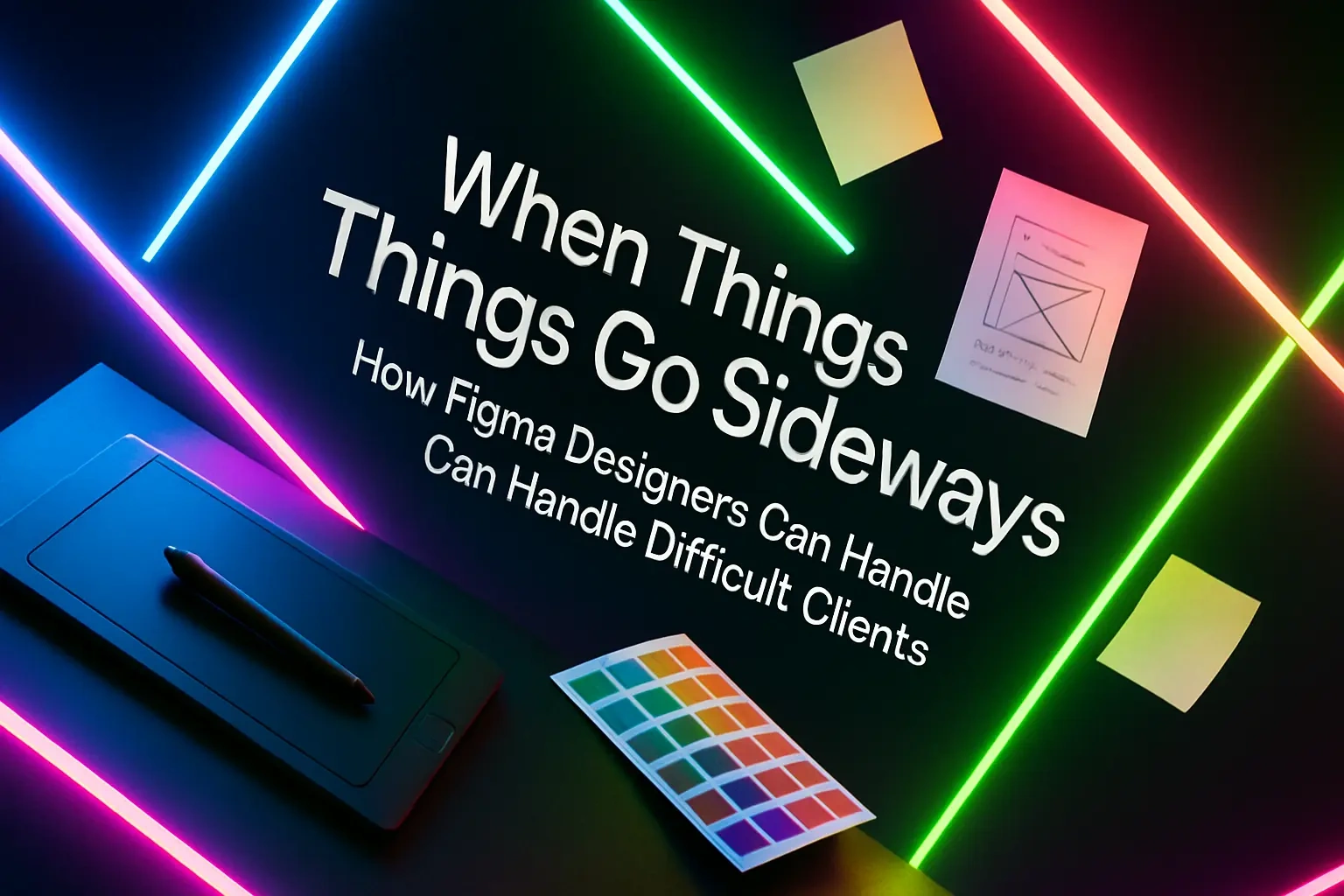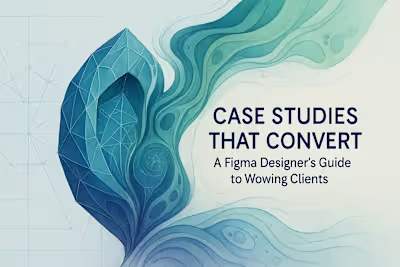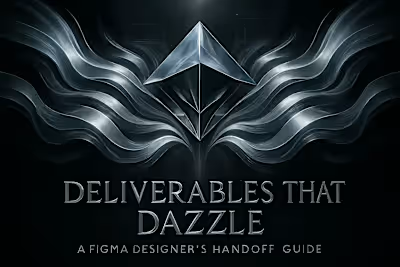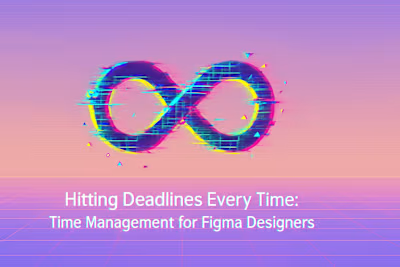When Things Go Sideways: How Figma Designers Can Handle Difficult Clients

When Things Go Sideways: How Figma Designers Can Handle Difficult Clients
Identifying the Red Flags: Early Warning Signs
Recognizing Common 'Difficult Client' Archetypes
The Importance of a Strong Contract
Strategies for Conflict Resolution
Stay Calm and Professional
Listen to Understand, Not Just to Reply
Focus on Solutions, Not Blame
Document Everything
When to Hold 'Em and When to Fold 'Em
Evaluating the Situation: Is the Project Worth Saving?
How to Professionally 'Fire' a Client
Learning from the Experience
References
When Things Go Sideways: How Figma Designers Can Handle Difficult Clients
Even with the best intentions, some projects hit rough patches. For freelance Figma designers, knowing how to handle difficult clients and navigate conflict is a crucial skill for long-term success. This article provides strategies for turning challenging situations around.
Often, the key is to refer back to preparing final deliverables that were agreed upon to bring clarity. When a project is at risk, it's about staying professional, communicating clearly, and finding a path forward. Knowing these strategies can give you the confidence to hire the best Figma designers, knowing you can build a successful partnership.
Identifying the Red Flags: Early Warning Signs
The best way to handle a difficult situation is to prevent it from escalating. Think of it like driving a car - you'd rather spot the warning signs early than deal with a full breakdown on the highway. This section covers the early warning signs of a potentially challenging client relationship.
Recognizing Common 'Difficult Client' Archetypes
After years in the design trenches, you start to recognize patterns. Some clients fall into predictable categories that can spell trouble if you're not prepared.
The Micromanager shows up in your inbox every hour. They want to approve every pixel, every color choice, and every tiny decision. You'll know them by their 47 Slack messages before lunch and their insistence on being CC'd on everything.
The Ghost is the opposite problem. They disappear for weeks, leaving you wondering if the project is still alive. Then they reappear with urgent demands and tight deadlines, expecting you to drop everything.
The Scope Creeper starts with "just one small change" that snowballs into a completely different project. What began as a landing page design somehow becomes a full website redesign, mobile app, and brand identity - all for the original price, of course.
The Know-It-All has strong opinions about design despite hiring you for your expertise. They'll send you articles about why Comic Sans is making a comeback or insist that their nephew could do this in Canva.
Spotting these types early lets you adjust your approach. With micromanagers, set clear communication boundaries from day one. For ghosts, build check-in milestones into your timeline. Scope creepers need firm contracts, and know-it-alls benefit from education about your design decisions.
The Importance of a Strong Contract
Your contract isn't just paperwork - it's your safety net when things get messy. A solid contract acts like a referee in a basketball game, keeping everyone playing by the rules.
Start with crystal-clear scope definitions. Instead of "design a website," specify exactly what you're delivering: "Design 5 responsive page layouts in Figma, including home, about, services, blog, and contact pages, with 2 rounds of revisions per page."
Include specific revision limits. Unlimited revisions is a recipe for disaster. State something like: "This project includes 2 rounds of revisions. Additional revisions will be billed at $X per hour."
Communication expectations matter too. Define response times, preferred channels, and meeting frequencies. Maybe you check email twice daily and respond within 24 hours. Put it in writing.
Payment terms need teeth. Consider requiring 50% upfront, with the balance due before final file delivery. Include late payment fees and specify that you retain ownership until full payment.
Don't forget the exit clause. Sometimes relationships don't work out, and that's okay. Include terms for how either party can end the agreement, what happens to work completed, and how payment is handled.
Strategies for Conflict Resolution
When disagreements arise, a calm and professional approach is key. Conflict happens in every business relationship - it's how you handle it that separates professionals from amateurs.
Stay Calm and Professional
Picture this: You've just received an email from your client. The subject line reads "This is NOT what we discussed!" Your heart rate spikes. Your first instinct might be to fire back a defensive response.
Stop. Take a breath. Maybe take a walk around the block.
Emotional reactions rarely improve situations. When criticism comes your way, treat it like data, not a personal attack. Your client's frustration usually stems from unmet expectations or miscommunication, not a desire to hurt your feelings.
Before responding, ask yourself: What's really happening here? Are they stressed about their own deadlines? Did something get lost in translation? Understanding the root cause helps you respond effectively.
Keep your tone neutral and solution-focused. Instead of "You never told me you wanted that," try "I understand you're looking for X. Let's review the project brief together and find the best path forward."
Remember, you're the professional here. Your calm response can de-escalate even the most heated situation. It's like being a firefighter - you don't add fuel to the flames.
Listen to Understand, Not Just to Reply
Active listening sounds simple, but it's surprisingly hard when you're feeling defensive. Most of us listen while mentally preparing our rebuttal. That's not really listening.
When a client expresses frustration, resist the urge to interrupt or explain. Let them finish completely. Then, reflect back what you heard: "So if I understand correctly, you're concerned that the design doesn't match your brand's premium positioning?"
This technique works magic. First, it shows you're actually paying attention. Second, it often reveals misunderstandings. Maybe they said "premium" but meant "minimalist." Clarifying prevents you from solving the wrong problem.
Ask open-ended questions to dig deeper. "Can you show me an example of what you had in mind?" or "What specific elements feel off-brand to you?" These questions turn vague complaints into actionable feedback.
Sometimes clients struggle to articulate design preferences. They know something's wrong but can't explain what. Your job is to be a translator, helping them express their vision in concrete terms.
Focus on Solutions, Not Blame
When projects derail, finger-pointing feels satisfying but solves nothing. Shifting from "whose fault is this?" to "how do we fix this?" changes everything.
Start meetings with struggling projects by acknowledging the situation without assigning blame. "We're not where we hoped to be with this project. Let's figure out how to get back on track."
Collaborative problem-solving beats defensive arguments every time. Present options, not ultimatums. "Here are three ways we could approach this: We could A) revise the current design within the original scope, B) expand the scope with additional budget, or C) scale back to meet the current timeline and budget."
Break big problems into smaller, manageable pieces. A client overwhelmed by a complete redesign might feel better tackling one page at a time. Small wins rebuild confidence and momentum.
Keep the focus on shared goals. You both want a successful project. Reminding everyone of this common ground helps maintain perspective when tensions rise.
Document Everything
Documentation feels tedious until it saves your bacon. Every phone call, every Slack message, every casual "oh, by the way" request needs a paper trail.
After phone or video calls, send a summary email: "Thanks for our call today. To confirm, we agreed to: 1) Revise the color palette to include more earth tones, 2) Add a testimonials section to the homepage, 3) Deliver revised designs by Friday."
Save all communications in a project folder. Screenshots of Slack conversations, email threads, even text messages. You're not being paranoid - you're being professional.
When scope changes arise, document them immediately. "Happy to add the blog design! This falls outside our original scope, so I'll send over a change order for the additional work."
This documentation serves multiple purposes. It prevents miscommunication, provides a reference for both parties, and protects you if disputes escalate. Think of it as project insurance - you hope you'll never need it, but you'll be grateful it's there if you do.
When to Hold 'Em and When to Fold 'Em
Not every project or client relationship is salvageable. Knowing when to walk away is just as important as knowing how to fix problems.
Evaluating the Situation: Is the Project Worth Saving?
Time for some honest math. Not the financial kind (though that matters too), but the whole-picture calculation.
Start with the money. How much have you already invested versus what you'll earn? If you've spent 40 hours on a project budgeted for 20, continuing might mean working for free. Factor in opportunity cost too - time spent on a nightmare project is time not spent finding better clients.
Consider your mental health. Some projects drain your creative energy and enthusiasm. If Sunday night dread creeps in when you think about Monday's client call, that's a red flag. Your well-being matters more than any single project.
Evaluate the relationship potential. Is this a rough patch in an otherwise good partnership? Or is this pattern likely to continue? A client who's difficult during a stressful product launch might return to normal afterward. A client who's been problematic from day one probably won't change.
Think about your reputation. Will completing this project enhance your portfolio and lead to referrals? Or will association with this client or subpar forced outcomes hurt your professional standing?
Finally, assess the learning value. Every challenging situation teaches something. But if you've already learned these lessons and you're just suffering through a repeat performance, it might be time to move on.
How to Professionally 'Fire' a Client
Breaking up with a client requires the same professionalism you'd bring to any other business decision. Do it right, and you can part ways while maintaining your reputation.
First, check your contract. What are the termination terms? How much notice is required? What happens to work already completed? Following your agreed-upon process protects both parties.
Schedule a call or meeting - don't do this over email if possible. Be direct but diplomatic: "After careful consideration, I've decided our working styles aren't the best match for this project's success. I believe you'll be better served by a designer who can meet your specific needs."
Avoid the temptation to list every grievance. This isn't therapy - it's a business decision. Keep it brief and professional. "Due to scheduling conflicts and differing project visions, I need to step back from this engagement."
Offer a smooth transition. Provide files in an organized format, document the current project status, and if possible, recommend other designers who might be a better fit. This gracious exit often prevents burned bridges.
Put everything in writing after the conversation. Send a formal notice referencing your contract terms, outlining the transition timeline, and confirming final payment terms. This protects both parties and provides closure.
Learning from the Experience
Every difficult client teaches valuable lessons - if you're willing to learn them. Take time to reflect once the dust settles.
Start with your screening process. What red flags did you miss during initial conversations? Maybe the client who haggled aggressively over price showed their true colors early. Perhaps the one who couldn't articulate their vision clearly was always going to be indecisive.
Review your contract and processes. Did unclear terms contribute to the conflict? Would better onboarding have set clearer expectations? Maybe you need stricter revision limits or more detailed scope definitions.
Consider your communication style. Did you assume the client understood design terminology they didn't? Could clearer updates have prevented misunderstandings? Sometimes small adjustments in how we communicate prevent big problems.
Look at project management. Did scope creep happen gradually? Were deadlines realistic from the start? Better project structure might have kept things on track.
Most importantly, trust your gut next time. That nagging feeling during the sales call? The hesitation before accepting the project? Your instincts often spot trouble before your logical mind catches up.
Write down these lessons. Create a "red flag checklist" for evaluating future clients. Update your contract based on what went wrong. Turn this painful experience into a tool for future success.
Remember, even seasoned designers encounter difficult clients. What separates professionals is how they handle these challenges and grow from them. Each difficult experience makes you better at spotting problems early, setting boundaries, and managing relationships.
The goal isn't to avoid all conflict - that's impossible in creative work. The goal is to handle challenges professionally, protect your business and well-being, and continuously improve your process. With these strategies in your toolkit, you're prepared for whatever client challenges come your way.
References
Like this project
Posted Jul 6, 2025
Difficult clients are a part of freelancing. Learn strategies for Figma designers to handle conflict, manage expectations, and save a project when things go wrong.









